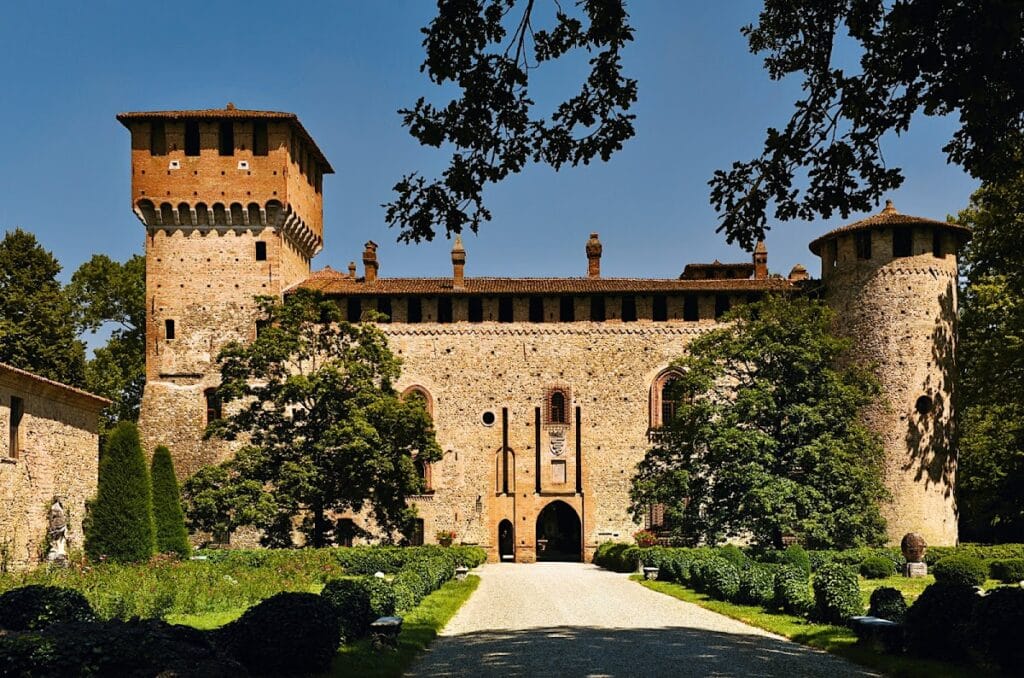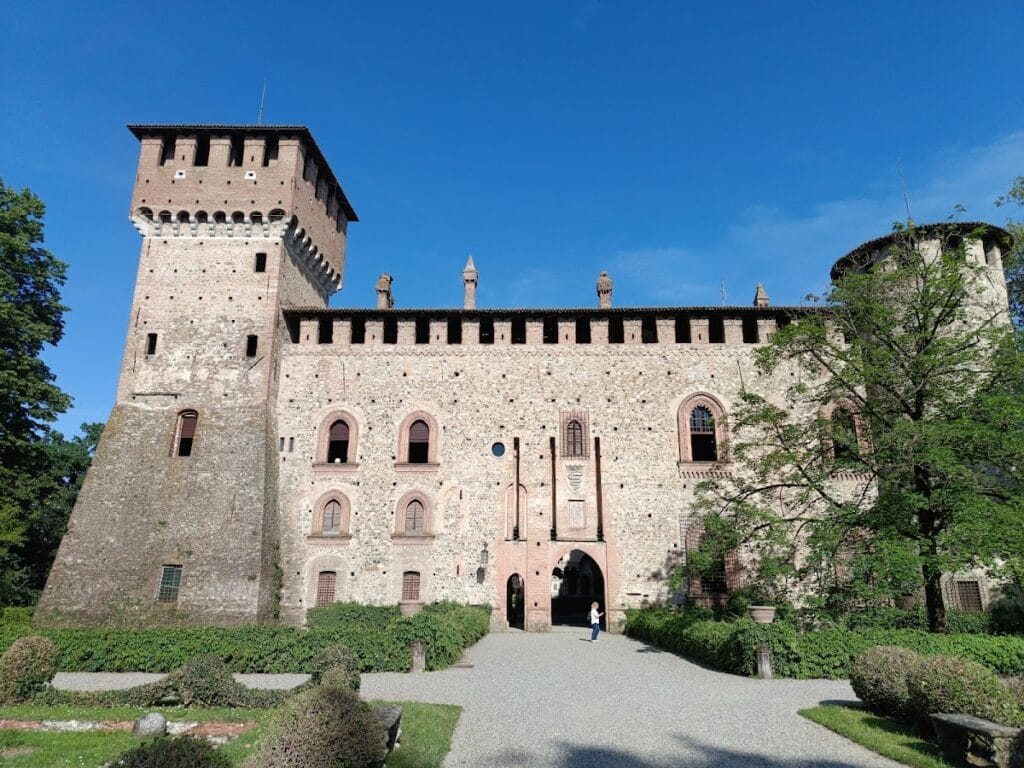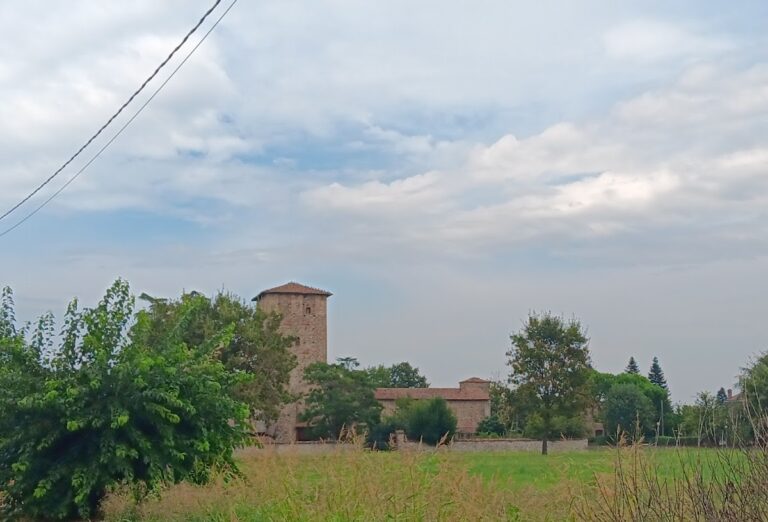Grazzano Visconti Castle: A Medieval Fortress in Italy
Visitor Information
Google Rating: 4.5
Popularity: High
Google Maps: View on Google Maps
Official Website: www.grazzanovisconti.com
Country: Italy
Civilization: Medieval European
Remains: Military
History
Grazzano Visconti Castle stands in the municipality of Grazzano Visconti, Italy, and was originally built by a local noble family during the late Middle Ages. The castle’s origins date back to 1395 when Giovanni Anguissola, after marrying Beatrice Visconti—sister of Gian Galeazzo Visconti, the Duke of Milan—commissioned its construction. It is thought that this fortress may have been erected on the ruins of an earlier building. The small settlement of Grazzano itself first appears in historical records around the year 1000, notably linked to land donations made to the San Savino monastery in Piacenza.
In the early 15th century, control of the castle became contested amid wider regional tensions. In 1414, Bernardo Anguissola was granted the castle along with neighboring fortresses and villages by Sigismund, who would later become Holy Roman Emperor. However, due to resistance from local nobles, effective control was only secured much later in 1438, when Duke Filippo Maria Visconti of Milan awarded Bernardo extra rights, including judicial independence from the nearby city of Piacenza. The Anguissola family’s possession of the castle was reaffirmed in 1459 by Duke Francesco I Sforza.
The castle’s surroundings witnessed conflict during the mid-15th century. In 1462, a peasant uprising against Sforza rule culminated in a battle near Grazzano Visconti. Many rebels were captured, among them Onofrio Anguissola. The peasant leader Giacomo Pelizzari was compelled to take his own life following the confrontation.
The 16th century brought significant turmoil. In 1521, French forces commanded by the mercenary leader Lautrec targeted regions aligned with the Scotti family, resulting in the destruction and burning of the castle and its village. A few years later, in 1526, the castle faced another attack, this time by Landsknechts, German mercenary soldiers active during the Italian Wars.
By the mid-1500s, Grazzano Visconti Castle regained political importance. In 1547, it hosted secret meetings that led to the assassination of Duke Pier Luigi Farnese, an act orchestrated by Giovanni Anguissola. After fleeing and serving Emperor Charles V abroad, Giovanni was eventually rehabilitated and recovered his estates. In 1576, he transferred ownership of the castle and its associated feudal rights to his cousins Teodosio and Alessandro Anguissola. The surrounding fief was elevated to marquisate status under the Farnese dukes in 1599.
Later improvements occurred in the late 17th century, notably in 1689 when the original wooden drawbridge was replaced by a more permanent brick bridge, the remains of which can still be seen today. Throughout the 19th century, the Anguissola family transformed the castle into a rural residence. However, by the end of that century, much of the structure had fallen into disrepair, with some defensive galleries and lodgings at risk of collapse. The surrounding modest buildings were in use mainly by local farmers.
Following the death of Count Filippo Anguissola in 1870, ownership passed to Francesca Visconti. In 1883, her nephew, Guido Visconti di Modrone, inherited the estate. At the turn of the 20th century, Giuseppe Visconti di Modrone undertook a thorough restoration of the castle and surroundings. Collaborating with architect Alfredo Campanini, he also commissioned the creation of a nearby fortified village styled in neo-Gothic and Renaissance architecture, replacing older rural structures.
Restoration work on the castle itself took place between 1906 and 1908, alongside the establishment of an extensive park. This ambitious program concluded after 1915 with the completion of a central square, named Biscione in honor of the Visconti family emblem. Key features of this square include a crenellated tower, a fountain, a well made with terracotta and pink marble, and the Podestà palace. The castle’s prestige was further recognized in 1937 when King Victor Emmanuel III granted Giuseppe Visconti di Modrone the title of Duke of Grazzano Visconti. In 1986, the community received official designation as a “City of Art” by the region of Emilia-Romagna.
Remains
Grazzano Visconti Castle presents a classic medieval fortress layout with a rectangular plan outlined by four corner towers. Two of these towers are cylindrical while the other two have square bases, together enclosing the castle grounds. The buildings occupy three sides of the complex, and the fourth side is sealed off by a crenellated wall designed to provide defensive battlements.
The structure is built predominantly from stone and brick, arranged in alternating bands that create decorative patterns. Terracotta elements emphasize profiles and borders, standing out against the stone surfaces. Within the castle, a central square courtyard is surrounded by covered walkways known as porticoes, offering sheltered passage around the inner perimeter.
Originally, the castle was accessed via a drawbridge spanning a surrounding moat, which served both defensive and symbolic purposes. In 1689, this feature was replaced by a permanent brick masonry bridge, remnants of which are still visible today, allowing insight into the castle’s evolving defensive methods.
Before the extensive early 20th-century restoration led by Giuseppe Visconti di Modrone, the castle bore three round towers and one square tower, with only one crowned by battlements, or crenellations. These towers varied considerably in height. During restoration efforts, the castle was expanded from its original two floors up to three, modifying its silhouette and increasing interior space.
Adjacent to the castle is a large park, covering around 120,000 square meters. This green space was developed in the late 19th and early 20th centuries and combines both native and exotic plant species. Indigenous trees such as pedunculate oak, elm, black poplar, hazel, and field maple stand alongside imported varieties including cedar, American cypress, and bamboo. Evergreen conifers like cypress, pine, and holm oak were planted to maintain greenery throughout the year. Among these, a notably old American sycamore, over a century and a half in age, survives as a living link to the site’s earlier landscape.
Nearby, the neo-medieval fortified village was constructed in the early 20th century under the guidance of architect Alfredo Campanini and patron Giuseppe Visconti di Modrone. This village incorporated medieval-inspired architectural features, replacing earlier rural buildings except for a handful of 18th-century houses and the parish church. The church, dedicated to Saints Cosmas and Damian, was originally built in 1650 on earlier foundations and experienced only modest modifications during the 20th century. It remains one of the few pre-modern structures in the village alongside the castle.
The castle’s main square, known as Biscione to recall the emblem of the Visconti family, was completed after 1915. It features a crenellated tower resembling medieval defensive architecture, a decorative fountain, and a well crafted from terracotta and pink marble. This square also contains the Podestà palace, historically associated with local municipal authority, all contributing to the castle complex’s elegant yet fortified character.










